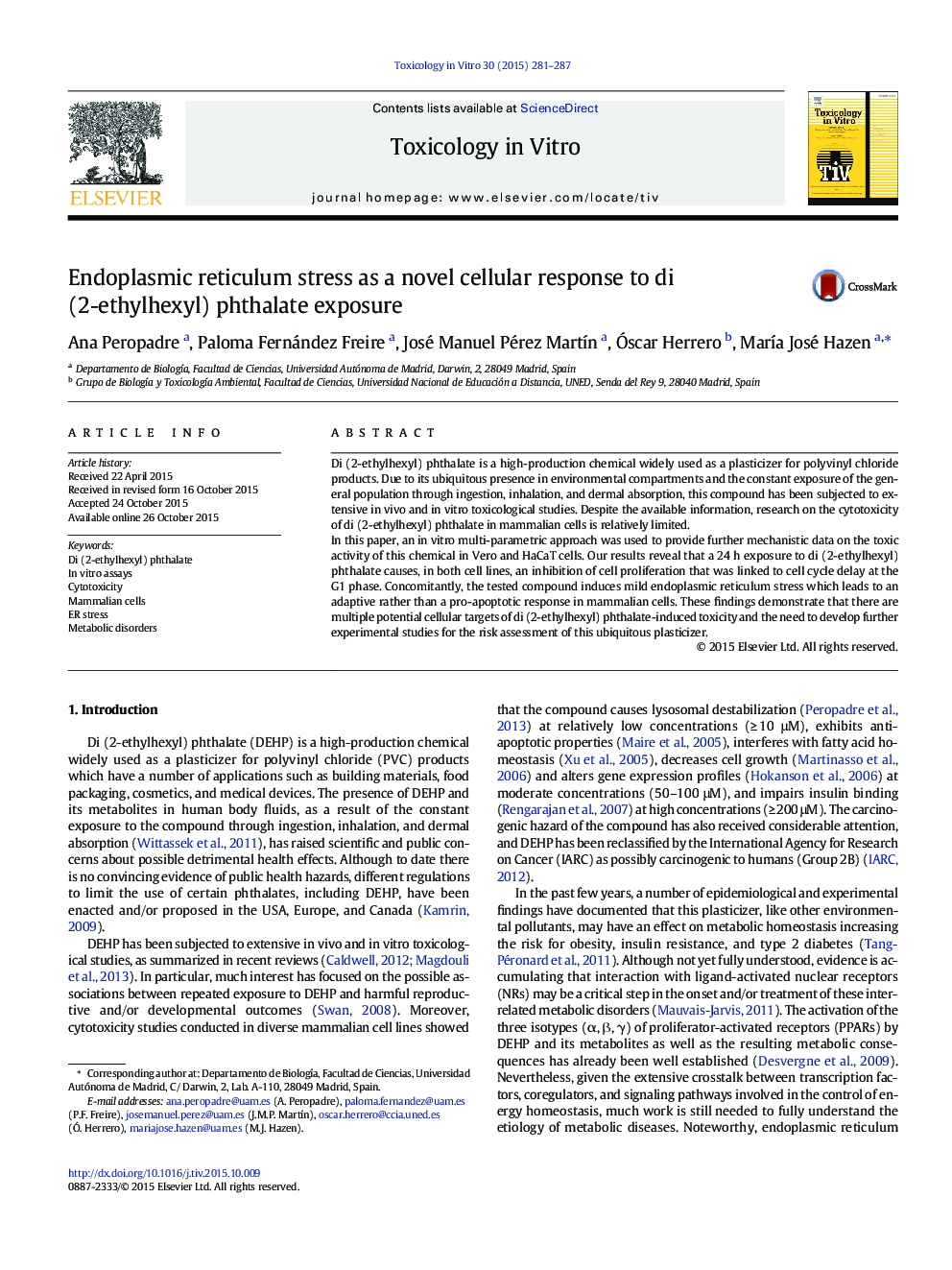| Article ID | Journal | Published Year | Pages | File Type |
|---|---|---|---|---|
| 2602416 | Toxicology in Vitro | 2015 | 7 Pages |
•The cytotoxic effects of DEHP in mammalian cells are not cell type-specific.•DEHP causes delayed cell cycle progression and reduces mitotic activity in Vero and HaCaT cells.•DEHP triggers ER stress and activation of the UPR in both mammalian cell lines.•Further experimental studies are needed to identify more cellular targets of DEHP.
Di (2-ethylhexyl) phthalate is a high-production chemical widely used as a plasticizer for polyvinyl chloride products. Due to its ubiquitous presence in environmental compartments and the constant exposure of the general population through ingestion, inhalation, and dermal absorption, this compound has been subjected to extensive in vivo and in vitro toxicological studies. Despite the available information, research on the cytotoxicity of di (2-ethylhexyl) phthalate in mammalian cells is relatively limited.In this paper, an in vitro multi-parametric approach was used to provide further mechanistic data on the toxic activity of this chemical in Vero and HaCaT cells. Our results reveal that a 24 h exposure to di (2-ethylhexyl) phthalate causes, in both cell lines, an inhibition of cell proliferation that was linked to cell cycle delay at the G1 phase. Concomitantly, the tested compound induces mild endoplasmic reticulum stress which leads to an adaptive rather than a pro-apoptotic response in mammalian cells. These findings demonstrate that there are multiple potential cellular targets of di (2-ethylhexyl) phthalate-induced toxicity and the need to develop further experimental studies for the risk assessment of this ubiquitous plasticizer.
Graphical abstractFigure optionsDownload full-size imageDownload as PowerPoint slide
